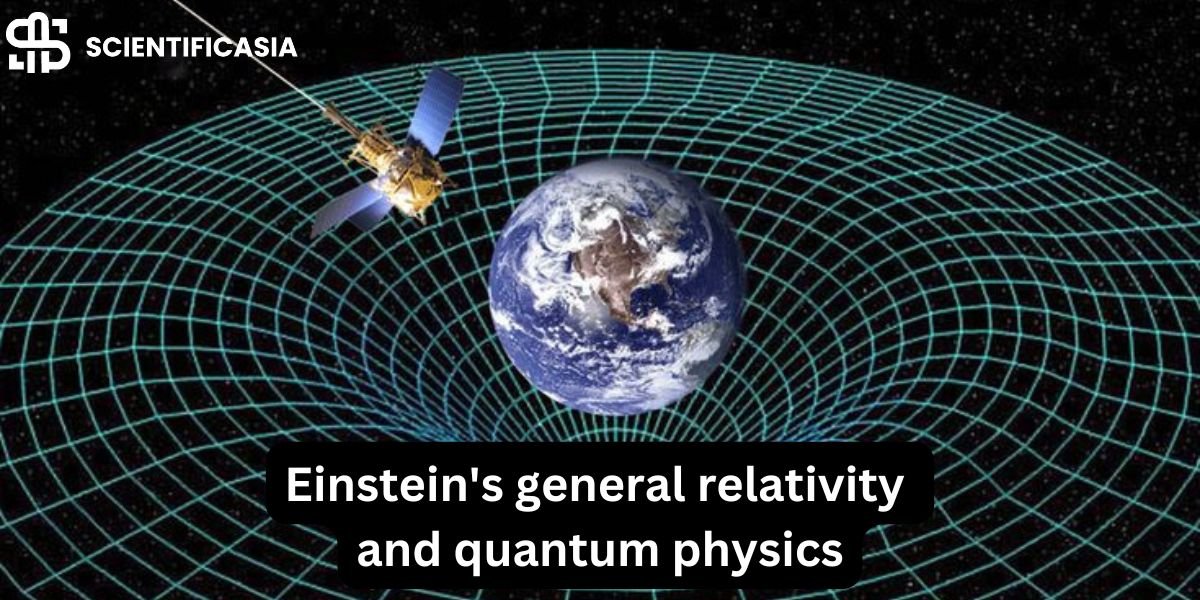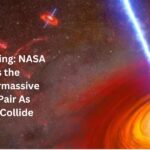We have an equation connecting the quantum world and the cosmic realm in previously unimaginable ways for the first time.
For the first time, a mathematical framework establishes the compatibility of quantum physics—the field of study that describes the behavior of electrons, photons, and other fundamental particles—and Einstein’s theory of general relativity, which describes the relationship between space, time, and gravity.
The researchers write in their report, “We proved that the Einstein field equation from general relativity is a relativistic quantum mechanical equation.”
Put another way, this new paradigm establishes a connection between the science governing the tiny world and the macroscopic world.
As a result, it can account for every known physical occurrence, from the photons released by your phone’s illumination to the enigmatic dark matter in space.
The researchers noted that “no universally accepted theory has been proposed to explain all physical observations to date.” They contend that their theory has the power to upend accepted physics and alter our perception of the cosmos.
Read this news: NASA Drops ESCAPADE from Debut New Glenn Mission
The gap between the quantum world and relativity
The principles of gravity are explained by Einstein’s general theory of relativity. According to this theory, enormous things such as planets, stars, or galaxies cause the space and time surrounding them to bend, much like a heavy ball on a trampoline. The bending produces the sensation of gravity.
Consequently, general relativity demonstrates that objects move along curves in the distorted space around them, refuting the idea that gravity is an invisible force that draws objects closer. The gravitational pull is stronger, and space is bent more when an item is more massive.
On the other hand, the study of the peculiar behavior of the smallest particles in the universe is the focus of quantum physics.
For example, it studies the phenomenon of particles like electrons existing in several states or places simultaneously (superposition) until they are measured. The objects we frequently interact with do not exhibit this kind of peculiar behavior.
Due to the fundamental differences between general relativity and quantum physics, scientists have not been able to reconcile the two theories to this point. It was challenging to combine these ideas into a unified framework because their applications, such as in the case of black holes, yielded contradicting results.
For instance, quantum physics indicates that such infinitesimals cannot occur, despite general relativity’s prediction that a black hole’s core would be infinitely dense.
Read more news: Africa CDC and WHO started a plan for covering the mpox
Connecting the dots between quantum physics and relativity
Why combine the two theories since general relativity functions well for large-scale objects and quantum physics describes microscopic processes accurately? There are two main causes for that, though. First, putting these together would offer a comprehensive comprehension of the cosmos at every scale.
This is significant since a lot of ideas, like the Big Bang and black holes, are most likely products of circumstances where both general relativity and quantum physics were present.
A theory that unifies the two is necessary to comprehend them.
Second, without making the connections between general relativity and quantum physics, it is impossible to comprehend the science underlying quantum gravity, Hawking radiation, string theory, and many other phenomena.
The researchers “redefined the mass and charge of leptons (fundamental particles) in terms of the interactions between the energy of the field and the curvature of the spacetime” to connect them.
The resulting formula is invariant about any Planck scale and covariant in spacetime. Thus, Planck length and Planck time are the only two constants that remain in the cosmos, according to the researchers.
This formula demonstrated mathematically that the quantum equation and the Einstein Field Equation, which is connected to the theory of relativity, are equivalent. According to the study’s authors, it can throw light on several hitherto unanswered mysteries.
It could clarify the circumstances surrounding the Big Bang, why black holes don’t collapse, and how space-time entanglement functions, among other things.
Furthermore, “The James Webb Space Telescope (JWST) has recently observed several phenomena, including galaxies that had previously existed 300 million years after the big bang and were previously believed to be nonexistent.” The researchers said that their explanation adequately explained the phenomenon.
















